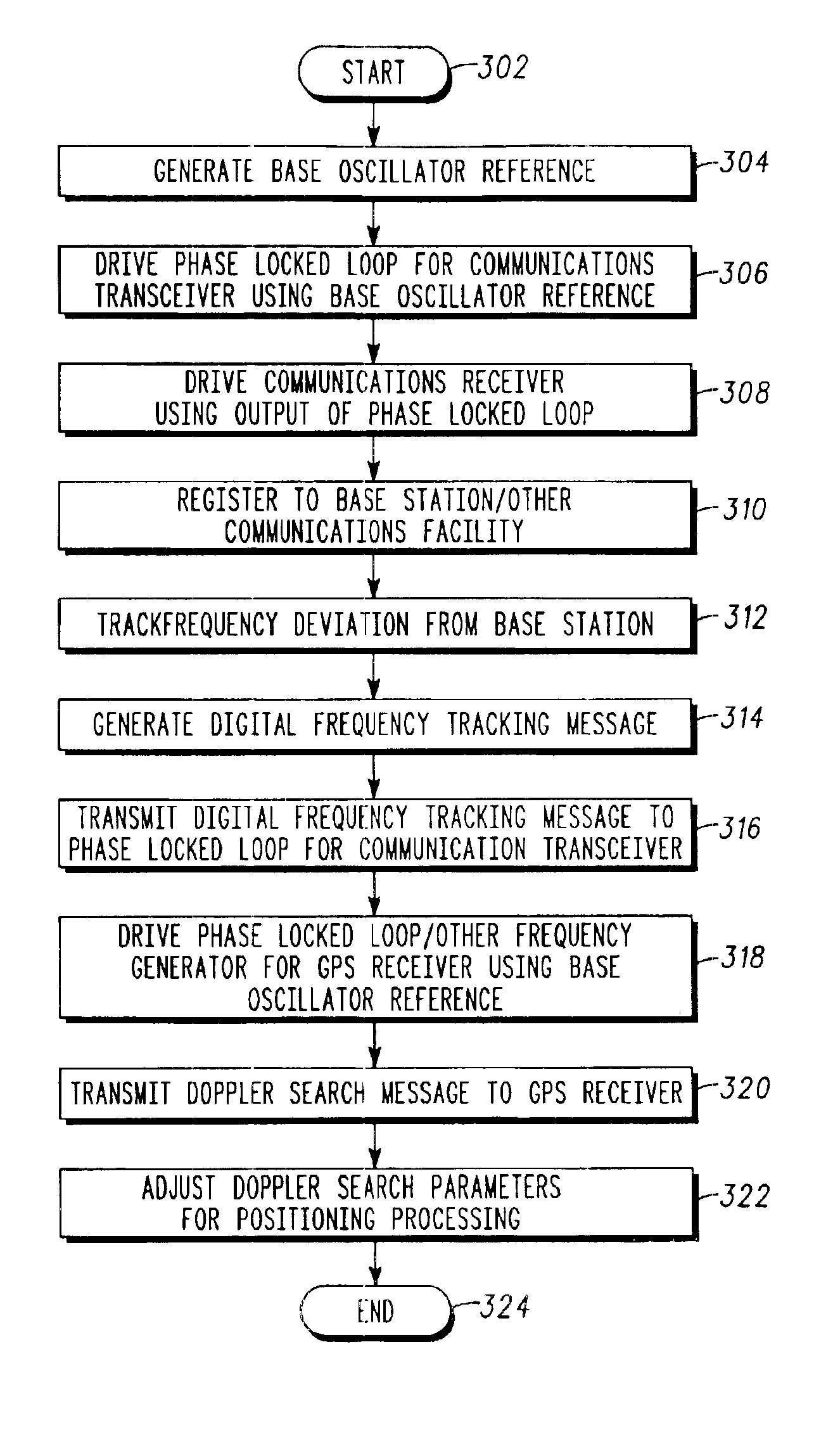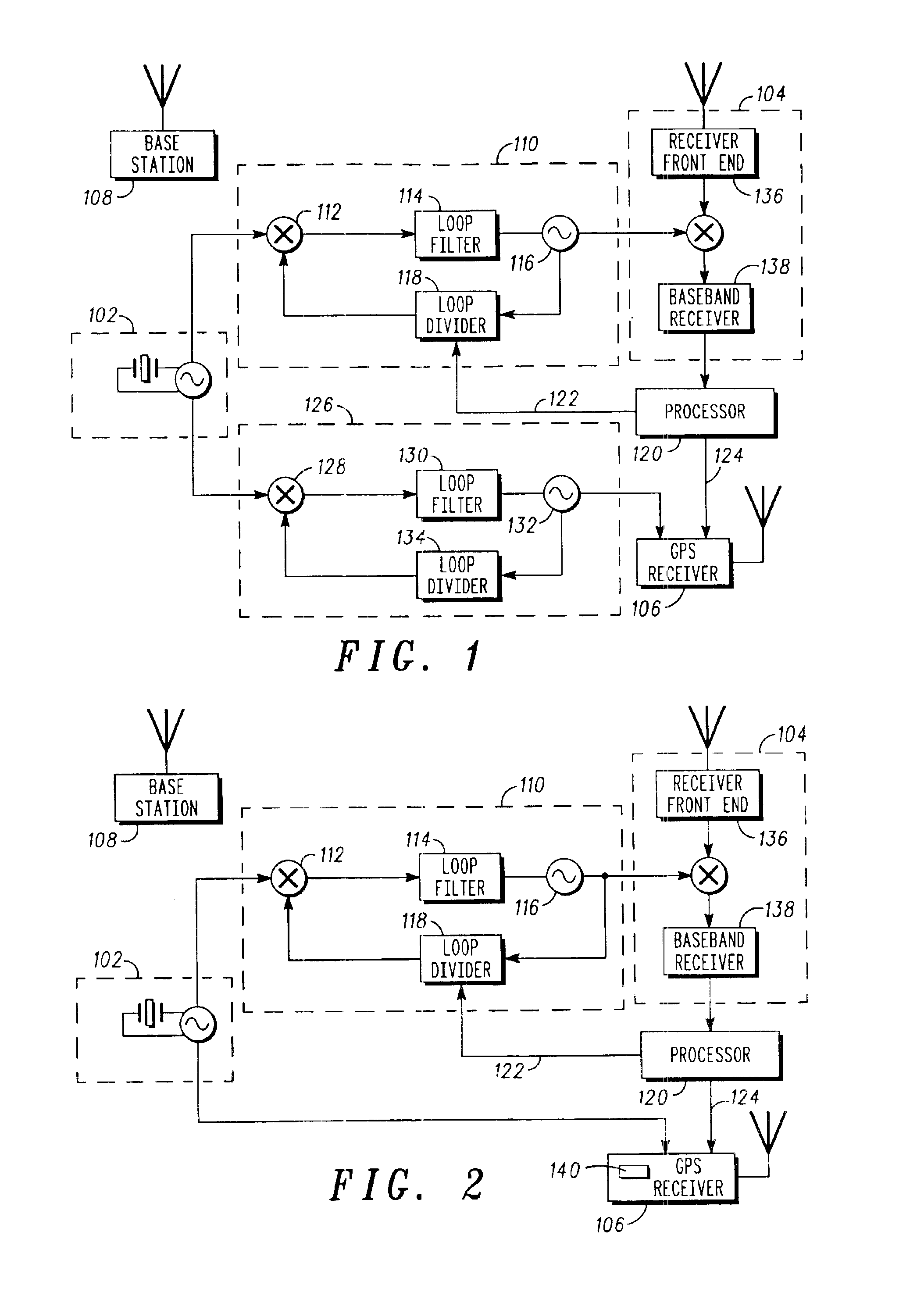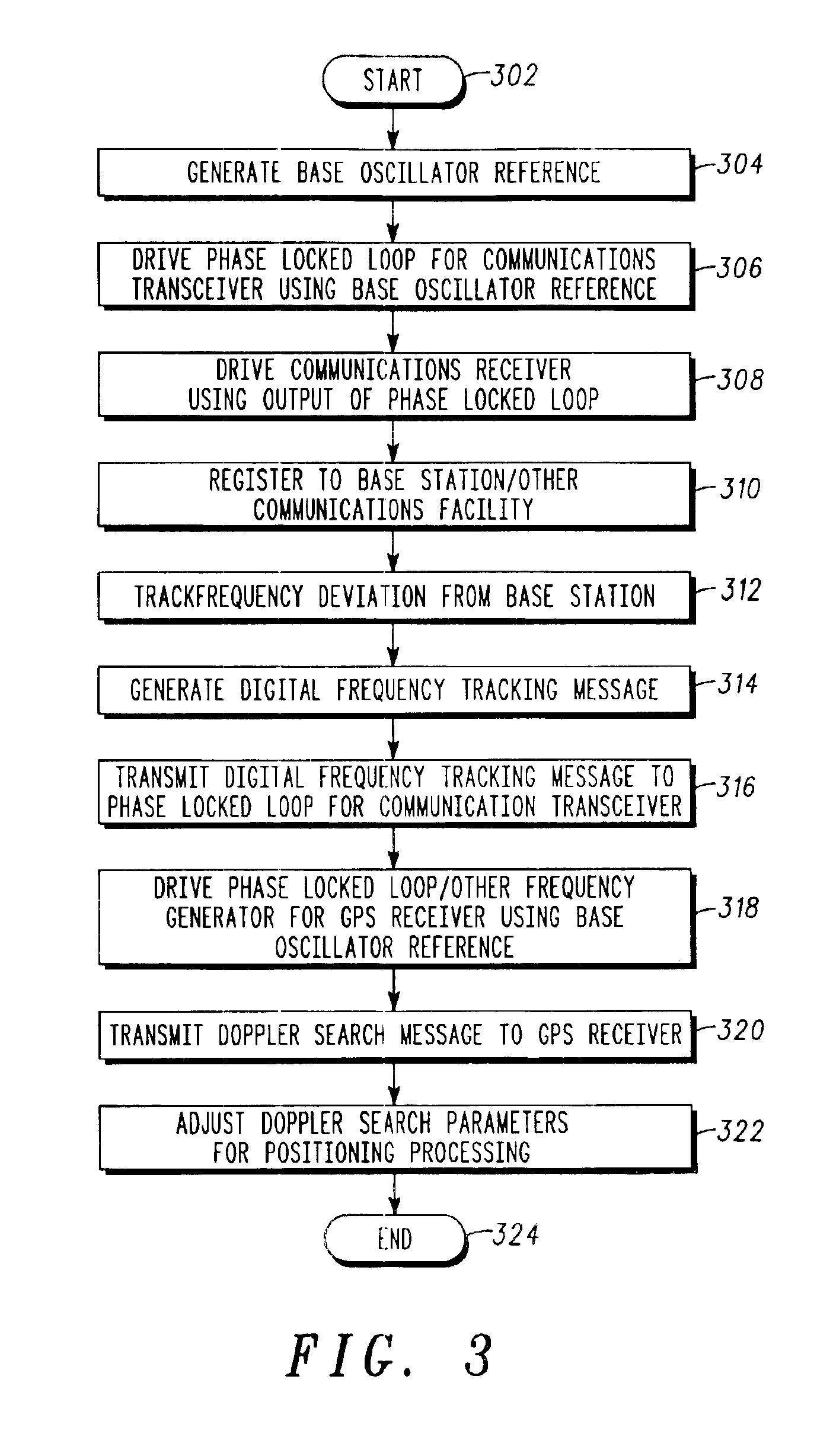System and method for frequency management in a communications positioning device
- Summary
- Abstract
- Description
- Claims
- Application Information
AI Technical Summary
Benefits of technology
Problems solved by technology
Method used
Image
Examples
Embodiment Construction
An architecture in which a frequency management system according to the invention may be implemented is illustrated in FIG. 1, in which a combined communications / positioning device incorporates both GPS receiver circuitry 106 and a communications transceiver 104. As illustrated, the communications transceiver 104 may include a receiver front end 136 for detection and downconversion of communications carrier signals, such as cellular telephone or other radio frequency (RF) or other signals, as well as a baseband receiver 138 for processing downconverted communications signals. The communications transceiver 104 of the combined device may be or include for instance a portable radio, cellular telephone, two-way or other pager, wireless modem, wireless personal digital assistant or other device that receives or transmits a radio, optical or other wireless communications signal. In embodiments, the communications transceiver 104 may communicate with or receive signals from a base station...
PUM
 Login to View More
Login to View More Abstract
Description
Claims
Application Information
 Login to View More
Login to View More - R&D
- Intellectual Property
- Life Sciences
- Materials
- Tech Scout
- Unparalleled Data Quality
- Higher Quality Content
- 60% Fewer Hallucinations
Browse by: Latest US Patents, China's latest patents, Technical Efficacy Thesaurus, Application Domain, Technology Topic, Popular Technical Reports.
© 2025 PatSnap. All rights reserved.Legal|Privacy policy|Modern Slavery Act Transparency Statement|Sitemap|About US| Contact US: help@patsnap.com



